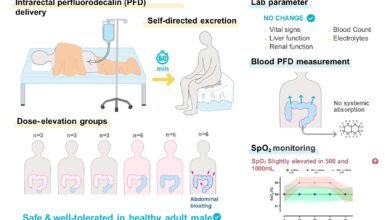Turtles’ Breathing Secret: Butt Breathing Proven Safe in Humans

▼ Summary
– Scientists have successfully tested enteral ventilation, a method of delivering oxygen through the rectum using a liquid absorbed in the intestines, for the first time in humans.
– This technique is intended as a complementary oxygenation route to allow lungs to rest, not to replace mechanical ventilators or ECMO.
– While safe in healthy volunteers, the method’s effectiveness in patients with respiratory distress still needs to be proven in future trials.
– The approach could potentially help newborns, premature infants, and patients with severe respiratory failure as a temporary bridge therapy.
– The research team was inspired by aquatic species and has received the Ig Nobel Prize for this unconventional idea that is progressing toward a viable medical technology.
A groundbreaking medical study has confirmed the safety of an unconventional breathing technique in humans, inspired by aquatic animals that absorb oxygen through their intestines. This method, known as enteral ventilation, introduces a specialized liquid into the rectum, allowing oxygen to be absorbed directly through the intestinal lining. Researchers emphasize this approach is not intended to replace traditional ventilators but could offer a complementary way to support patients when their lungs need rest.
The recent human trial, involving 27 healthy male volunteers, successfully demonstrated that the procedure is safe and well-tolerated. Participants received a liquid called perfluorodecalin via an enema-like process. Since the study focused solely on safety, the liquid used was not oxygenated, and none of the subjects experienced respiratory distress during the experiment. Mild and temporary gastrointestinal symptoms, such as bloating, were the only side effects reported, aligning with expectations from earlier animal studies.
Takanori Takebe, a lead researcher affiliated with Cincinnati Children’s Hospital Medical Center and the University of Osaka, explained that enteral ventilation could serve as a “bridge” therapy. It might help sustain patients, including newborns with underdeveloped lungs or individuals suffering from acute respiratory failure, until standard breathing support can be applied. Future studies will test oxygenated perfluorodecalin on patients with low blood oxygen levels to measure how effectively the method delivers oxygen.
The concept draws from nature: certain fish, like loaches, use intestinal oxygen absorption to survive in oxygen-poor water. Using liquid for ventilation isn’t entirely new, decades ago, scientists explored liquid breathing, and it even appeared in the film The Abyss, where a rat breathes in a tank of oxygenated perfluorocarbon.
Despite its serious medical potential, the idea of “breathing through your butt” has attracted lighthearted attention. In 2024, the research team received an Ig Nobel Prize, a humorous award celebrating unusual scientific work that makes people laugh and then think. Takebe noted that the recognition highlights how unconventional ideas, even those met with initial skepticism, can evolve into meaningful innovations. What started as an almost whimsical concept is now advancing toward possible clinical use.
(Source: 404 media)

